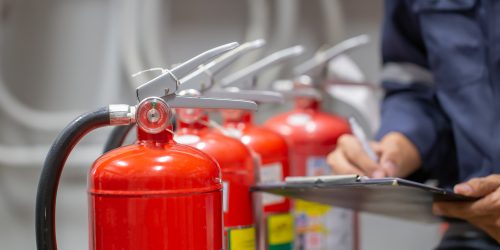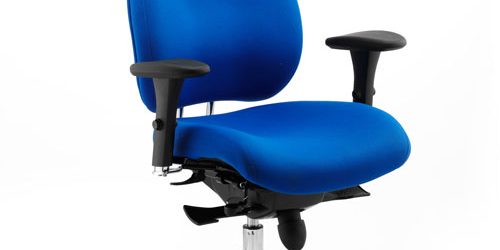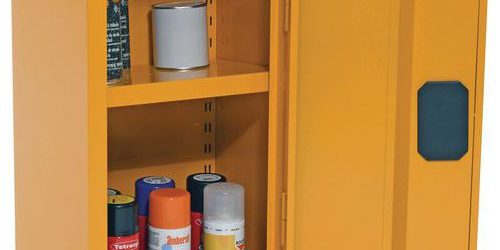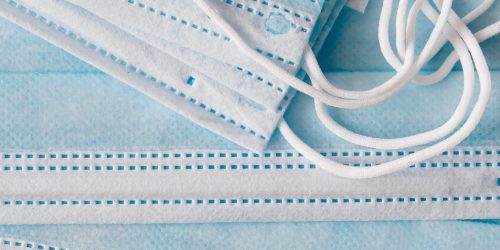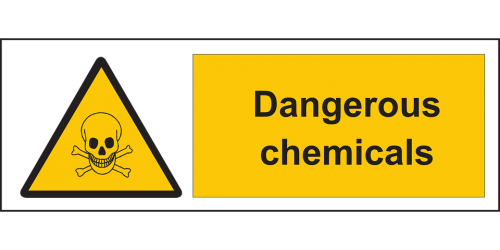How to choose the best spill absorbent products for your company
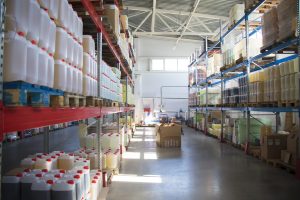
Absorbents should not be purchased at random. Depending on the nature of the liquids, the quantity spilled and the areas to be cleaned, different products must be used. Whether it’s to protect work areas, storage areas, or transit areas, to prevent the spillage of chemicals and hazardous materials on floors, or to clean up dirt, using the right product is essential. This guide is specially designed to help you choose the best absorbent for your needs.
How to decide which type of absorbent your company needs
Whether you’re dealing with a chemical spill or an accidental liquid spillage, absorbents protect people and the environment. They also avoid the significant cost involved in deep cleaning the affected areas. However, you still need to identify which absorbent you need, whether as a preventive measure or in response to an incident.
Questions to ask yourself before choosing an absorbent:
The choice of absorbent depends on the business activity and the type of products present on the premises. Here are the first questions you should ask yourself to figure out which absorbent products your company needs:
- What type of liquids are used?
- What is the nature of these liquids (water, oil, hydrocarbons, chemicals, drinks, blood, etc.)?
- What volume of liquids are you using?
- How much is likely to be spilled (accidentally or otherwise)?
- Which areas need to be protected?
- What kind of space are the substances handled in?
By looking back at past accidents and thinking about possible future precautions, you can narrow down the selection of absorbents as well as initiate a hazard prevention policy.
Effective stock tracking is essential to avoid running out of absorbent products, thereby endangering company staff and the environment. It’s important to ensure that you always have enough available.
The different types of absorbent
Absorbent products come in various forms:
- Socks, also known as sausages or booms
- Mats or pads
- Rolls
- Pillows
- Granules
Each type has specific features and is designed for a particular use. By taking into account the nature of the liquids present on the premises, you can make an informed choice.
Which absorbent should you choose for which type of liquid?
The choice of absorbent depends on the nature of the liquid(s) to be absorbed: hydrocarbons, chemicals, etc. Each type requires a solution with the right characteristics.
Hydrocarbon absorbents
This type of absorbent is suitable for oils, petrol, and hydrocarbons. It is also very effective for decontaminating a water point.
You can find numerous products in our hydrocarbon absorbents range online. They offer varying degrees of absorbency, strength, and technological sophistication.
Meltblown cloths are made from polypropylene. Their hydrophobic properties enable them to absorb pollutants while repelling water. Of all the available solutions, these products have the highest speed and capacity of absorption.
For superior strength or more intensive use, Perrine Corre, Product Manager for the industrial absorbents category and in particular for the Ikasorb® brand, advises opting for Meltblown Dimpled (in sheet or roll format) or for Meltblown Dimpled+.
For companies looking for a lint-free cloth with a reinforced surface, Coverstock Meltblown Coverstock is the ideal choice (in roll or sheet format).
Ikasorb® is an expert private label from Manutan, specialising in mid and high-end industrial absorbents, with over 60 products available in its catalogue.
Chemical absorbents
Any chemical or hazardous product requires a heavy-duty absorbent to contain the leak quickly and to avoid endangering personnel.
Chemical absorbents are colour-coded for ease of visibility and they are abrasion resistant.
To prevent hazardous spills, it is advisable to protect high-risk areas before starting work. However, if an incident does occur, absorbent products will be very useful.
Remember that it is essential to use personal protective equipment (PPE) when handling chemicals.
Rolls, sheets, socks, pillows and so on: When choosing the most suitable format of absorbent, the spaces involved must be taken into account. The solution will vary depending on the size and nature of the area, the number of employees using it and how it is used.
Universal absorbents
A universal absorbent is ideal for use on a wide range of liquids (water, oil, coolants, paint, alcohol, etc.), as well as for dealing with the unexpected.
Various technologies are available to best suit your company’s needs.
Here are some examples, listed in ascending order of strength and traffic intensity and in descending order of capacity and speed of absorption:
- Meltblown Dimpled (MD)
- Coverstock Cellulose Coverstock (CCC)
- Coverstock Meltblown Coverstock (CMC)
- Meltblown Dimpled+ (MD+)
- Spunbond Meltblown (SM)
- Spunbond Meltblown Spunbond (SMS)
So, the stronger an absorbent is, the lower its capacity and speed of absorption, and vice versa.
Whichever absorbent products you choose, it is advisable to store them in a dry place, away from UV light, to ensure that they keep for a long time. Similarly, it is good practice to store hydrocarbon absorbents separately from other absorbents so that they retain their hydrophobic properties, which are essential for their effectiveness.
Natural and environmentally friendly absorbent granules are also available. Of mineral or plant origin, they are made from sand, clay, vermiculite, diatomaceous earth, sawdust, straw, peat, etc. Besides being environmentally friendly, they are very affordable and have non-slip and non-abrasive properties.
Which format of absorbent should you choose?
It may sound obvious, but depending on the situation, one format of absorbent will be more appropriate than another. So, which products from the Ikasorb® range should you choose?
For minor spills
To deal with light spills, there are two choices: Sheet and roll absorbents.
Sheets are ideal for absorbing low volumes of liquid and cleaning small areas, including machinery and adjacent spaces. Quick to use and easy to store, absorbent sheets are practical and multi-purpose.
The rolls are pre-cut. They can therefore be used in long strips to protect a large area or in sheets to soak up a smaller amount of liquid. Absorbent rolls quickly secure a workstation or transit area and easily adapt to any situation.
Best absorbents for hard-to-reach areas
Due to their shape and flexibility, absorbent socks are ideal for controlling spillage in narrow or hard-to-reach places (behind ducts, around machines, etc.).
For absorbing a large amount of liquid
Socks act as a barrier, channeling liquids and preventing the spread of large spills. They can hold a large amount of fluid and fit into tight, hard-to-reach spaces.
Alternatively, pillows are also capable of absorbing large leaks and are ideal for use in small spaces.
Protecting drainage channels from chemical spills
Shutter plates act as an anti-pollution barrier to prevent dangerous liquids from leaking into drainage channels. They are coloured orange to draw attention to the area at risk. They are also resistant to water, oil, hydrocarbons, and chemicals and are reusable.
Cleaning up fluids
Absorbents for water-based liquids are ideal for cleaning up substances such as blood, urine, vomit, drinks, etc. They are very easy to use: just sprinkle the substance on the liquid, wait a few seconds for it to jellify, and clear it up with ease.
This type of absorbent is essential for hospitals, public transport, shopping centres, schools, leisure centres, and any public building with heavy traffic.
To protect transit areas, it is advisable to use multi-purpose absorbent mats. These products are very sturdy and are ideal for high-traffic aisles and around machinery where there is a lot of movement.
Absorbent kits to cope with any situation
Some incidents may require a particular type of absorbent, which is not used very often. To be prepared for all eventualities, it is advisable to always have absorbent kits at hand. They are available in a variety of formats to suit a variety of situations and are reasonably priced.
Available in bags, cabinets, boxes, and mobile containers, they are a company’s best friend in an emergency.
Visit our spill containment range here.


